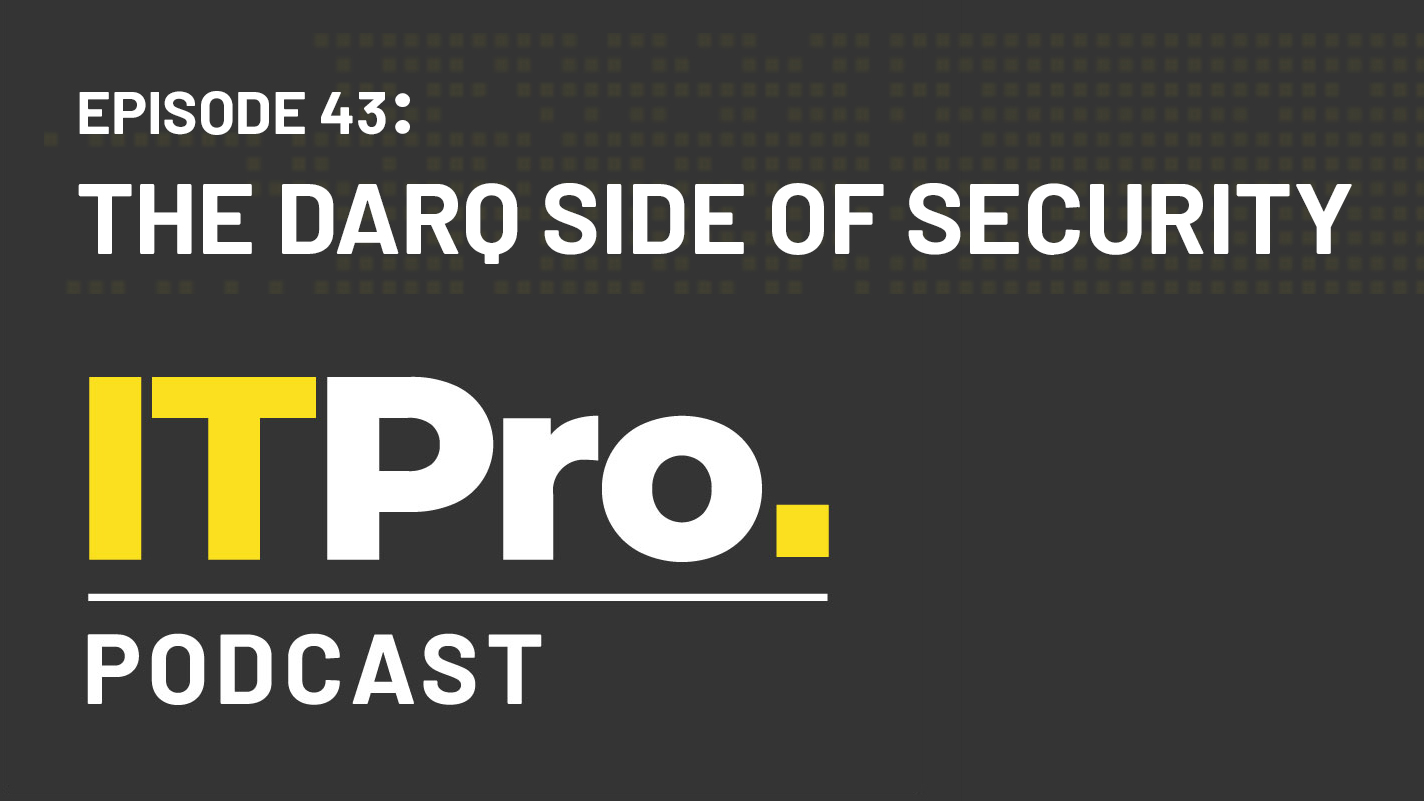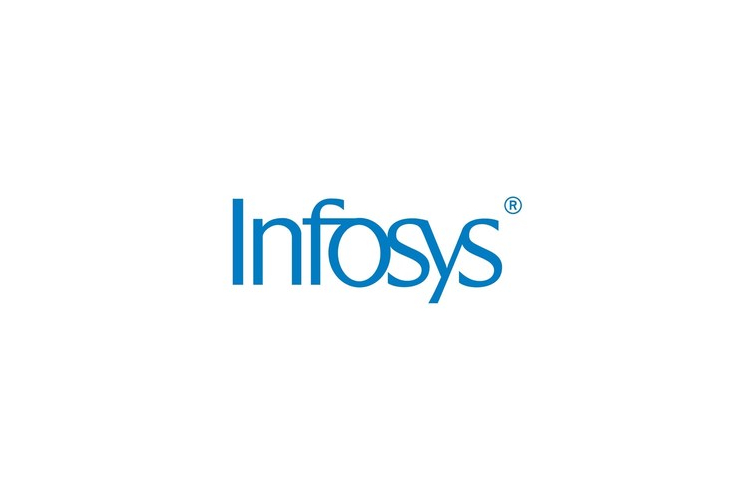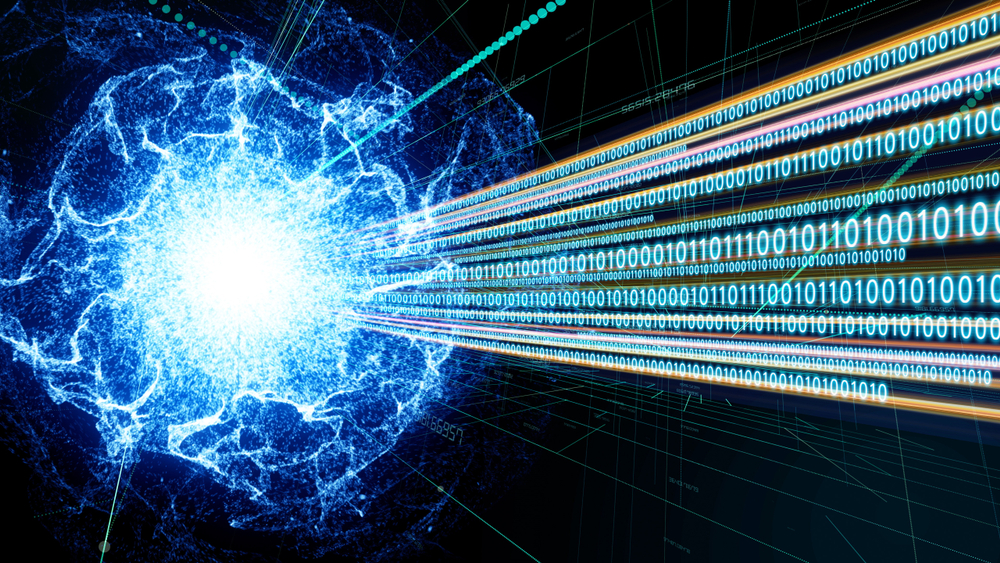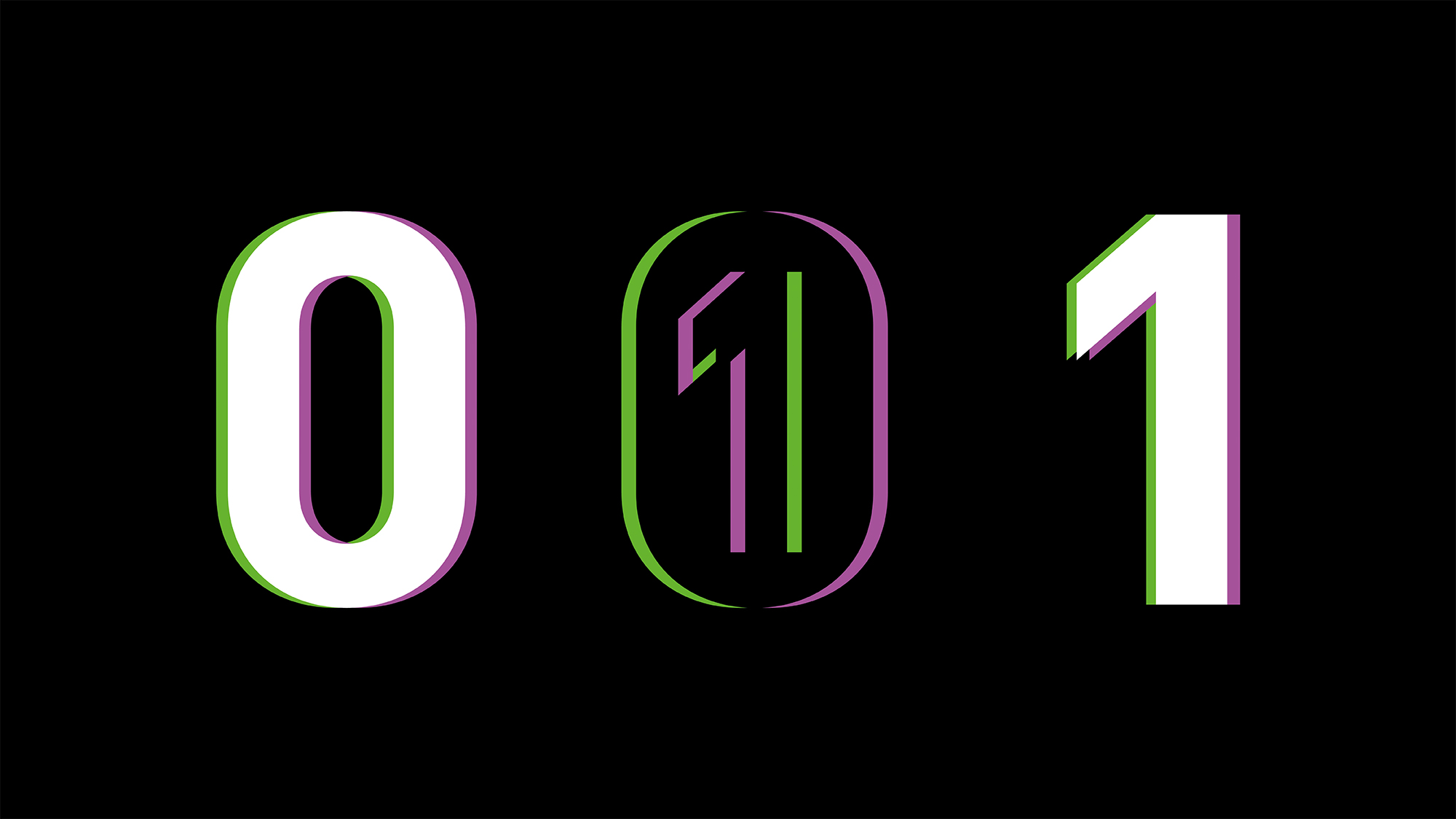The quantum internet is on its way
A pair of key experiments show how quantum tech could add unbreakable security to the internet


You may not have realised it as you were doom-scrolling through news about pandemics and politics, but 2020 was the year of the quantum internet – all thanks to a pair of experiments that suggests this futuristic networking technology could indeed be possible.
It’s not a new idea, with the US military’s Defense Advanced Research Projects Agency (DARPA) setting up the first quantum key distribution network in 2003 and experiments in quantum teleportation going back to 1997 at the University of Vienna.
So what was so special about 2020? In February, scientists from the University of Science and Technology of China published a paper detailing a 1,200km quantum link with the Micius satellite, the longest yet. A few months later, in September, researchers at the University of Bristol revealed a way to scale this nascent tech beyond a single connection.
“When I started, getting quantum computing to work between two people was a big deal,” says Siddarth Joshi, a research fellow at the University of Bristol’s Faculty of Engineering. “Now we are getting it to work between larger and larger networks. And satellites, when I started, were a dream. Now there’s a satellite in orbit and we’re building other satellites.”
Plenty of other researchers are investigating this area, with notable work at the University of Innsbruck and the University of Chicago, and a Delft University of Technology project to build a network between four cities. But, in 2020, these two sets of results marked a step forward for the tech.
“We can do a lot of interesting things on a one-to-one basis at a near distance,” says Dr Harun Šiljak, assistant professor at the School of Engineering at Trinity College Dublin. “But when we try to stretch it over hundreds of kilometres, or if there’s dozens of participants, things get ugly. And 2020 brought us both an advancement in trust-free communications over distance with the Chinese, and in terms of scaling with what’s being done in Bristol.”
How it works
What is the quantum internet? With the standard internet, packets of data are sent via networks and reassembled at the other end. For added protection, those packets are now largely encrypted.
Get the ITPro daily newsletter
Sign up today and you will receive a free copy of our Future Focus 2025 report - the leading guidance on AI, cybersecurity and other IT challenges as per 700+ senior executives
Quantum internet takes advantage of inherent connections between quantum bits, or qubits. That link between particles is known as entanglement, and whatever change you make to one entangled particle happens to the other. Rather than sending packets of data, the quantum internet sends an entangled light particle down a fibre-optic line, holding back the particle that’s linked to it. They now have a connection for sending data. Meddle with that and it’s immediately obvious, as any attempt to measure a quantum state automatically changes it – it’s a rule of physics – making it impossible to intercept the transmission.
Qubits can act like binary but better: rather than a one or a zero, a qubit can be either, both or neither, making it possible to encode even more data. Shove one of those qubits into the particle you held back, and the data will show up in the one you sent down the fibre-optic cable.
That’s the simplified version, and it’s so much more complicated than that in reality – not least because physics is hard and particles of light are finicky at best.
We’ve already seen the first wave of this technology, which uses the property of entanglement to share something similar to encryption keys, called quantum key distribution (QKD).
The first quantum key distribution was in 2004 for a bank in Austria, and commercial QKD services are already on offer from companies such as ID Quantique and MagiQ Technologies. QKD is one aspect of the quantum internet, but now there’s work sharing even more information over longer distances to more people.
“The big advantage of quantum communication is that it’s far more secure than anything else,” Joshi says. The encryption we use to protect our communications now is difficult to decrypt, but not impossible – and will become simple when quantum computers arrive. “If somebody has a sufficiently powerful computer, they can solve the problem and be able to decrypt it very easily,” he says.
After all, anyone with a fast PC today could decrypt communications from 30 years ago, if they had access to them. “If you want to keep data secure in the long term, you want something like quantum communication, where it’s not based on a problem that is difficult to solve, but a problem that is impossible to solve – it relies on the laws of physics to ensure that a process is one way, like burning a message on a piece of paper.”
That said, Joshi notes that transmission is only one aspect of security or privacy: If the person you’re sending it to takes a screenshot of the message and posts it to Twitter, it doesn’t matter if it was sent using 30-year-old encryption or quantum networking.
The Chinese satellite
With both experiments, the issue to overcome wasn’t with the idea of the quantum internet but scaling: First in the distance covered and, second, with the number of participants.
Let’s start with distance. This is a problem because of attenuation; the signal decays and that can cause the quantum properties to fade. “You’re trying to distribute something that’s very fragile over a large distance, and you’re doing it through fibre-optic cable,” Šiljak says. That’s true for traditional communications as well, with repeaters in place to boost the light signal and send it forward, but the physics aren’t the same for quantum signals, he adds.
One way of avoiding that issue is line-of-sight transmissions, which works with satellites. In 2016, China launched the world’s first quantum satellite, named Micius, as part of the Quantum Experiments at Space Scale (QUESS) project – at the time, it was dubbed by Popular Science as a “satellite for the post-Snowden age”. It’s widely assumed that China’s focus on satellite quantum communications is due to potential military benefits.
Indeed, this style of quantum communications only works if you trust who runs the satellite. “That’s a major thing,” Šiljak sasaysid. “Back when Micius was just launched … every participant in the conversation had to trust the satellite – you established a connection with the satellite, and agreed on the keys … we pretty much trusted that the satellite on our side is not managed by some entity that we don’t trust.”
That’s no longer the case, with the key exchange happening between the sender and receiver via the satellite, but without the satellite having the means to intercept the data. “That was a big advancement, since that’s what we’ve been imagining with the quantum internet,” Šiljak says. “And it’s finally happening.”
While this means quantum satellites could work, it doesn’t solve the attenuation issues for fibre optics, with researchers in Chicago building a 50km fibre-optic quantum loop to investigate the problem. “If we want anything resembling the internet, we need quantum repeaters,” Šiljak says. “That’s the holy grail we’re pursuing.”
More people
The University of Bristol project, part of the Quantum Communications Hub and UK National Quantum Technologies Programme, scaled up the number of people in the network, connecting eight via quantum communications. It’s not many, but it’s a start.
Previously, one of the challenges with quantum networks was the need for both a transmitter and a receiver, rather like the walkie-talkies you may have had as a child. One set let you speak to a friend, but to include a third friend, you’d need another set. “Now imagine that scaled up to 100 people,” Joshi said. “You’d have to have 99 walkie-talkies.”
The other way to manage such communications is to have a trusted node. Everyone on the network shares their message with the node, which in turn doles it out to the recipient. That’s what Joshi’s project managed using an idea called multiplexing, which means that everyone on the network has a quantum-entangled state with everyone else. He compares it to the internet, where you have one device and one internet cable or Wi-Fi connection, but that setup means you can receive signals from anyone. “We were able to do this across the city of Bristol, so it’s not just a lab demonstration,” he said.
However, there’s a limit to this technology: Go beyond 50 to 100 people on the network and it won’t work. This time Joshi compares it to a home Wi-Fi network, which can normally only connect 32 devices. “The way around that is you have to figure out how to connect one router to another router, and start building larger and larger networks,” he says. “That is exactly what our next step is.”
It won’t be easy. Not only will adding users increase the network complexity, but it’s unclear exactly how the quantum internet will be used in the future, so Joshi and his team don’t know exactly what to optimise for. “Because quantum networks are such an emerging field, you’re trying to create networks that are as flexible as possible,” he says.
Other challenges
Another major challenge for the quantum internet is memory. “The fundamental principle of memory, of something that could store quantum information, is as yet unsolved,” Šiljak says. “It’s another major issue and it touches both on computation and communication.”
Another hurdle relates directly to Šiljak’s own work: Connecting the existing internet to a quantum version. At the core is the idea of reversible computing, in which computers don’t lose information when performing an operation. “Imagine that you have a computer that is summing two numbers. You put in two numbers and you get an output third number – but you aren’t able to reconstruct the inputs from the outputs,” he says. “If the answer is seven, you have no idea which two numbers were used.”
It gets a bit weird here: By losing that information about the inputs, power is dissipated. It’s like entropy, but for computers, Šiljak says of the theory. “If your computer forgets things, it has to spend more energy than a computer that does not,” he explains. When Šiljak started working on that idea, the one example that kept being raised was quantum computers, which have to be reversible by their nature.
What does that have to do with interconnects? While traditional computers aren’t reversible, quantum ones would be – and for them to interact there needs to be a structure in between them. Building that won’t be easy, though.
When will the quantum internet arrive?
Quantum internet won’t replace the existing internet but be an added function. Joshi believes it will start being adopted for specific use cases by government and financial institutions to keep backbone connections secure. That work has already started, with Joshi working with commercial partners, but could take a decade.
RELATED RESOURCE

The IT Pro Podcast: The DARQ side of security
We explore DARQ technologies, and their potential security implications
It will take much longer for a quantum network to connect all the way down to your house, and will require optical fibre to do so. “We might see limited applications that to an extent resemble our electrical computer network, but not necessarily the internet,” Šiljak says.
That may make the idea of a quantum internet sound unlikely; after all, so far, it can connect two people sitting nearby. But that’s exactly how the internet itself began, argues Joshi, “connecting just two universities in CERN”. In particular, the first communication was sending simple messages. “That’s exactly how the quantum internet is starting right now,” he says. “We have good analogies from the past, we’ve done this all before.”
Indeed, Joshi looks to optical fibre rollouts as another analogy from the past to explain how quantum internet will arrive. First, it will link data centres and other important back-end sites. Then it will filter down in stages, eventually reaching individual homes. “That’s the kind of adoption curve we’re looking at here as well,” he says.
Security for all
Perfectly secure communication has a clear use case for the military, financial institutions and governments, who not only need to know a message hasn’t been read but also have the money to run cutting-edge systems.
However, the researchers behind these projects believe the quantum internet will be for everyone – and should be. “I would say that privacy and security are fundamental rights,” Joshi says. “One day this is going to be universal, everybody wants this.”
In fact, he argues that in the long-term, it’s personal data that matters the most. A financial transaction, such as with your bank, is only of interest to hackers to hijack in the moment, not decades down the line. “You send money, it’s received on the other end of the globe within seconds,” Joshi says. “If you have a sufficiently complex problem that a current computer cannot hack in a few seconds, that’s fine.
“But what do you want to really keep private? Your personal details, your medical information. You don’t want that information to leak out 30 years later and embarrass you,” he adds. “That is where quantum communication really shines.”
Of course, governments have long fought against end-to-end encryption for private individuals, arguing that it gets in the way of prevention and investigation of serious crimes such as terrorism. We can expect them to do the same here. “There’ll be two competing interests,” Joshi predicted. “The government will want the technology to exist in its unmodified and perfectly secure form, and also want the technology to exist such that they can snoop on everybody else.”
This won’t just have a niche application, Šiljak says. If quantum internet can be built in an affordable, scalable way to be used by the military or fintechs then it shouldn’t be too expensive or complex for everyone to use.
“I don’t see a scenario in which it remains a closed technology,” Šiljak says. “Once we have it, it’s going to be distributed globally.”
Freelance journalist Nicole Kobie first started writing for ITPro in 2007, with bylines in New Scientist, Wired, PC Pro and many more.
Nicole the author of a book about the history of technology, The Long History of the Future.
-
 Bigger salaries, more burnout: Is the CISO role in crisis?
Bigger salaries, more burnout: Is the CISO role in crisis?In-depth CISOs are more stressed than ever before – but why is this and what can be done?
By Kate O'Flaherty Published
-
 Cheap cyber crime kits can be bought on the dark web for less than $25
Cheap cyber crime kits can be bought on the dark web for less than $25News Research from NordVPN shows phishing kits are now widely available on the dark web and via messaging apps like Telegram, and are often selling for less than $25.
By Emma Woollacott Published
-
 Quantum is 'the future of AWS system security', Amazon claims
Quantum is 'the future of AWS system security', Amazon claimsNews With third major quantum investment, AWS sets stage for next decade of network infrastructure
By Rory Bathgate Published
-
 BT and Toshiba to launch quantum-secured network across London
BT and Toshiba to launch quantum-secured network across LondonNews The two companies say this is the first commercially available network of its kind
By Zach Marzouk Published
-
 Infosys selects AWS to develop next-gen quantum computing applications
Infosys selects AWS to develop next-gen quantum computing applicationsNews The firm will leverage Amazon Braket to test novel quantum computing algorithms
By Praharsha Anand Published
-
 Researchers build multi-node quantum network
Researchers build multi-node quantum networkNews The network paves the way for quantum internet that uses quantum physics for communications.
By Danny Bradbury Published
-
 Quantum supremacy is here — so what?
Quantum supremacy is here — so what?In-depth While Google's claim to have hit the milestone is important, there's still a way to go on the road to quantum computing
By Nicole Kobie Published